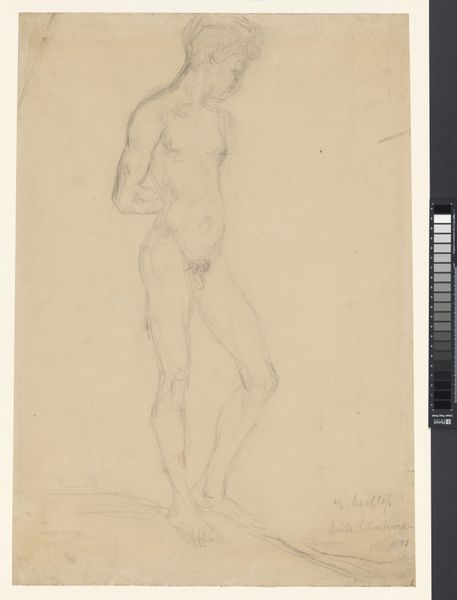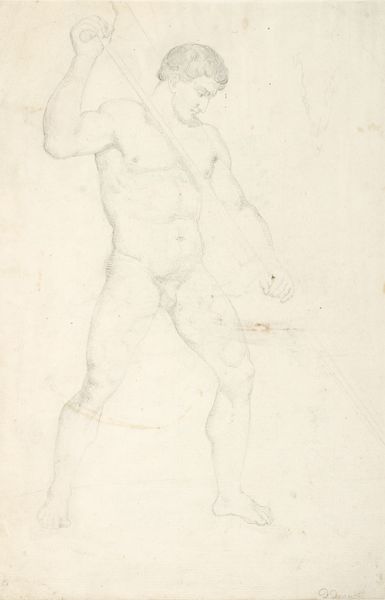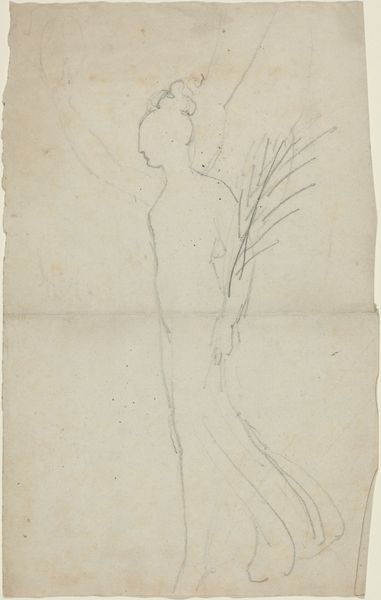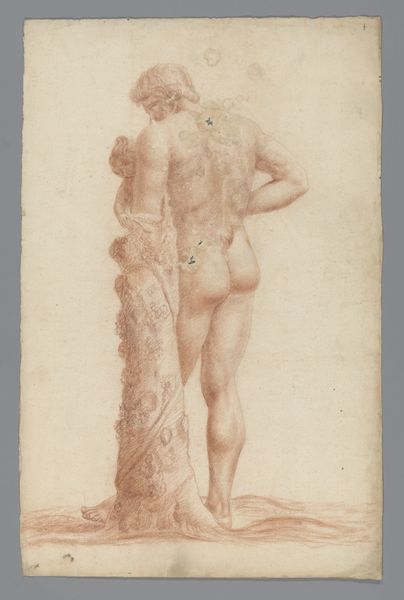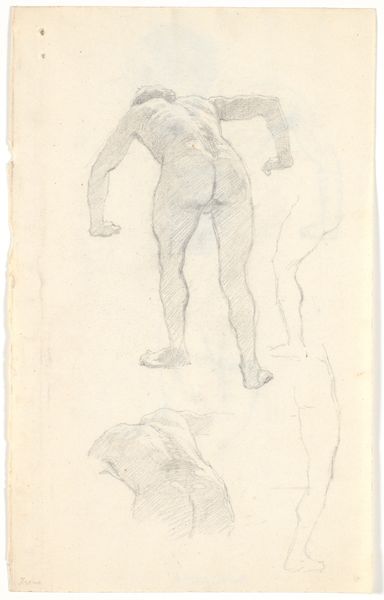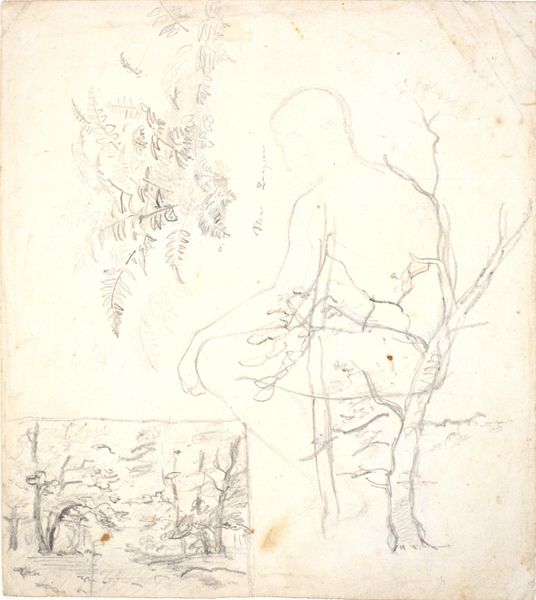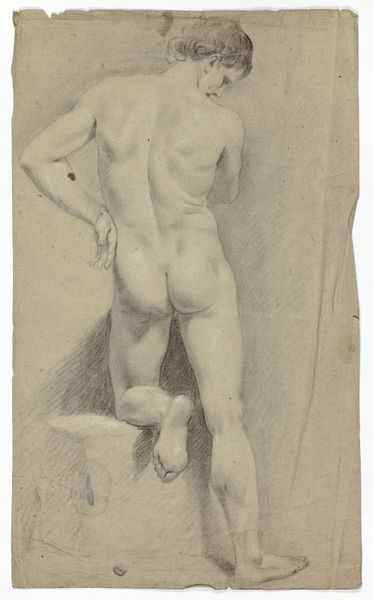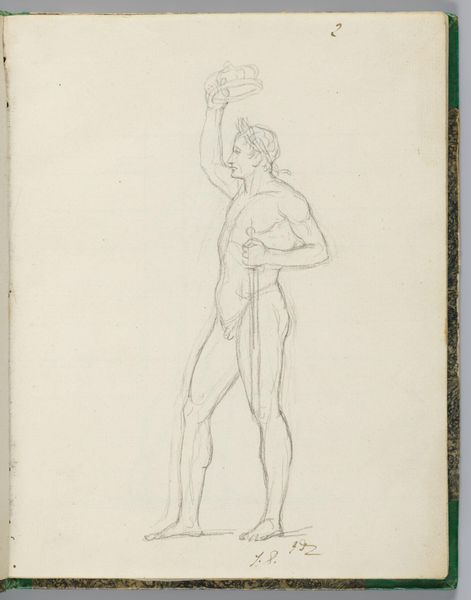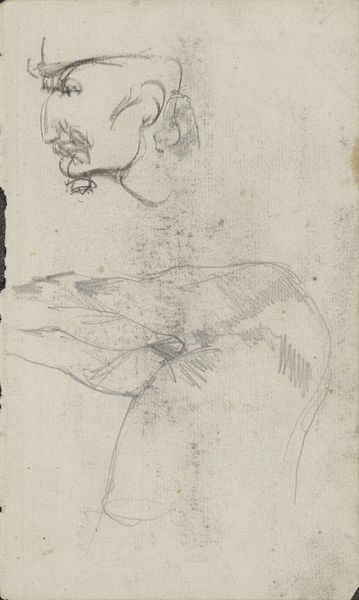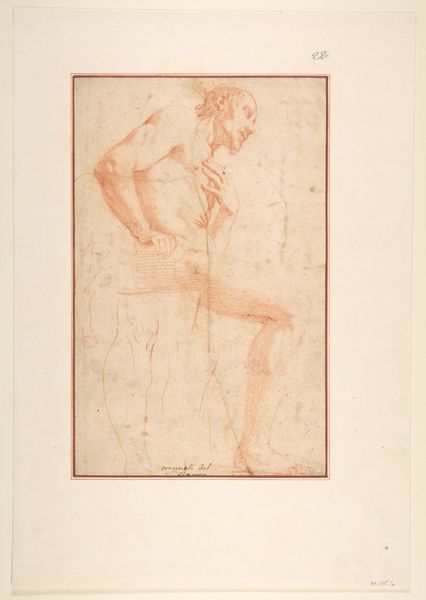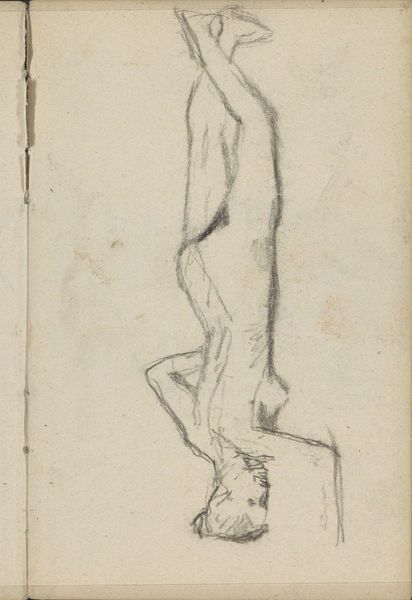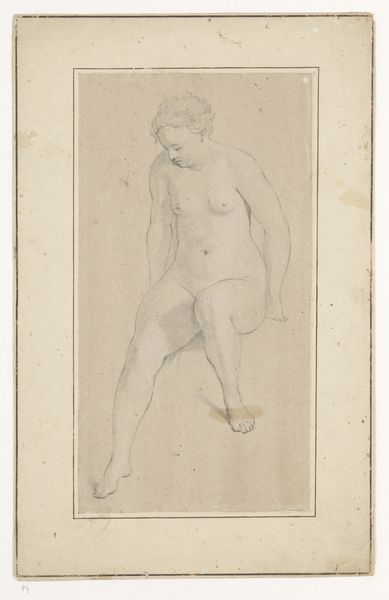
drawing, paper, pencil
#
portrait
#
drawing
#
figuration
#
paper
#
romanticism
#
pencil
Dimensions: 182 mm (height) x 115 mm (width) (bladmaal)
Curator: Here we have Martinus Rørbye’s pencil drawing, “Nøgen mand med stav i hånden samt to ærmer”, created circa 1825 to 1826. It resides here at the SMK, Statens Museum for Kunst. What strikes you first about this piece? Editor: Its ephemeral quality. The lines are so light, so fleeting. The figure feels almost ghost-like, caught between realities. There's a vulnerability too; the bare figure holding only a simple staff. It feels quite personal. Curator: Absolutely. Rørbye's pencil work on paper here emphasizes process over finished product, highlighting the artist's hand and labor in the delicate tracing. Think of the conditions he would have worked in to create this, and the means for material access and production to create works like these at the time. It gives the impression of spontaneity, as if we're glimpsing a private moment of study. Editor: Indeed. I think its the seeming "fragmentation" of the drawing, how the different body parts seem to float around the figure, creates a space where identities and bodies themselves might be questioned, negotiated, or put together in unexpected ways. Is the figure posing? Practicing some form of martial art or maybe dancing? Curator: Or simply sketching. Rørbye, a major figure in the Danish Golden Age, frequently used drawing as a means of exploring form and composition. The material, humble as it is, transforms into something sublime, a moment of quiet introspection. Editor: But that very "humbleness" can be deceptive. Remember the social hierarchy implicit in artistic training during that period. The "private" study you mention was accessible only to certain demographics and reinforces established positions. Rørbye’s focus might appear merely artistic or beautiful, but art is rarely "art for art's sake;" it reinforces values. Curator: An excellent point. Though appearing preliminary, drawings like these shed light on the labor involved in producing even grander artworks, inviting viewers to see artistic process as valuable. We might ask, what kind of hand produced this work, and what did this kind of art production signify during that period. Editor: It invites us to question what's being depicted, not just the 'how' of its depiction. It reminds us that the power to create and display art has always been tied to questions of access, privilege, and representation. Curator: Considering the materiality, it speaks to a level of intimate access the artist had, too. An artistic journey, accessible now. Editor: A potent reminder of both art's capabilities and its entanglement with social dynamics, now visible over a gulf of centuries.
Comments
No comments
Be the first to comment and join the conversation on the ultimate creative platform.
